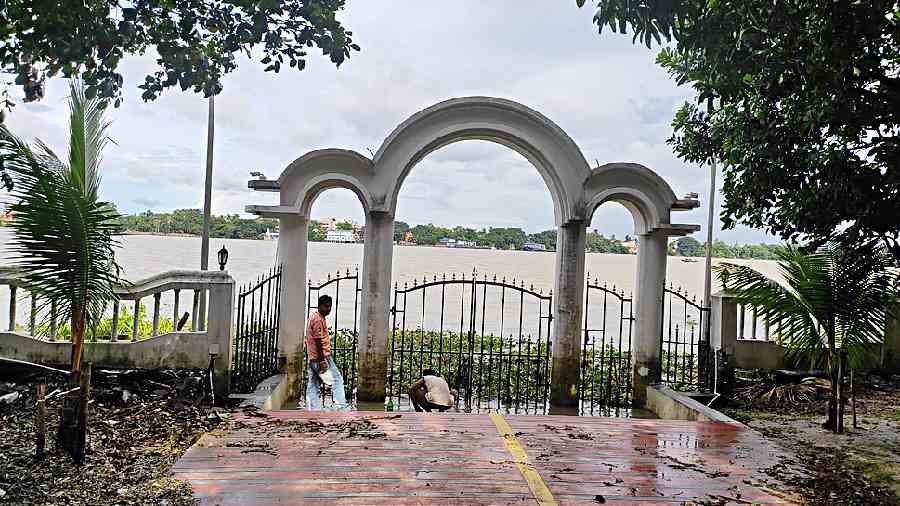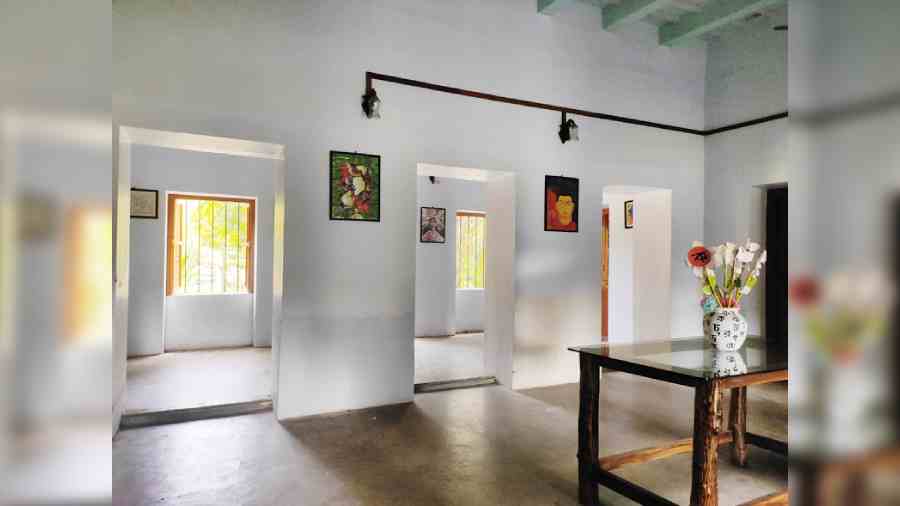A quaint one-storey house amid a sprawling garden on the banks of the Hooghly in Konnagar known as Aban Thakur’s Baganbari will have an augmented reality (AR) exhibition of Abanindranath Tagore’s artworks along with those of his brother Gagendranath and their uncle Rabindranath.
The house and the accompanying garden have been rescued from land sharks and renovated by the Konnagar municipality.
Konnagar is about 20km from Kolkata on the eastern banks of the river Hooghly.
The exhibition is an attempt to bring, albeit virtually, the works of Abanindranath Tagore to his baganbari where he had spent a part of his childhood and where, as he says in his memoir Jorasankor Dhare, he learnt to draw.

A private ghat at the baganbari
The colonial-style single-storey house with outer verandahs and several rooms along with its surrounding garden and a private ghat was thrown open to the public just before the pandemic forced a shutdown in March 2020.
Talking about the rescue and restoration effort, Konnagar municipality chairman Swapan Das said: “This place was a jungle till a few years back. According to our records, this baganbari was registered with the Konnagar municipality in the name of one Pulin Krishna Ray. Abanindranath Tagore’s father, Gunendranath Tagore, probably bought this space from him.”
Abanindranath, born on August 7, 1871, spent his early childhood here.
In Jorasankor Dhare, he writes how he learnt to draw here. He also writes about a bohurupee show and says how he learnt here that a typical Bengal hut had a round thatched roof instead of a straight roof. He died in 1951.
Later D’waldi factory rented out this space for its employee quarters.
Thereafter in 2007, May 28, the then West Bengal Heritage Commission chairman Pratap Chandra Chunder declared this house a heritage property.
Despite that, the building was bought by a private developer and a plan was submitted for sanction to the municipality. That is when the civic authorities realized that they were on the verge of losing a heritage property.

The interiors of a room of the house
A movement started by the local people created awareness and finally, the developers gifted the house along with the garden and the ghat to the municipality. “The entire property covers 30 bighas (10 acres), the developer returned 15 bighas to the municipality,” said the chairman.
The municipality restored the house at a cost of Rs 4 crore and today it is open to the public from 9am to 5pm.
The University of Liverpool along with Intach, Hooghly Chapter, have collaborated to create this virtual exhibition that will go live by November this year.
Visitors to the baganbari will be able to view artworks by Abanindranath, Gaganendranath and Rabindranath, curated thematically, by scanning QR codes pasted on the walls.
A link to the virtual exhibition will also be hosted on the websites of the Konnagar municipality and Victoria Memorial Hall (VMH) which has shared about 30 artworks of Gaganendranath and Abanindranath from its collection.
Works from Victoria and Albert Museum, London have also been sourced digitally.
“It would have been an impossible task to create a physical gallery of his works. We accomplished this task of creating a virtual gallery at a cost of Rs 25 lakh,” said Soumyen Bandyopadhyay who holds the Sir James Stirling Chair in Architecture at Liverpool University and has curated the show.
